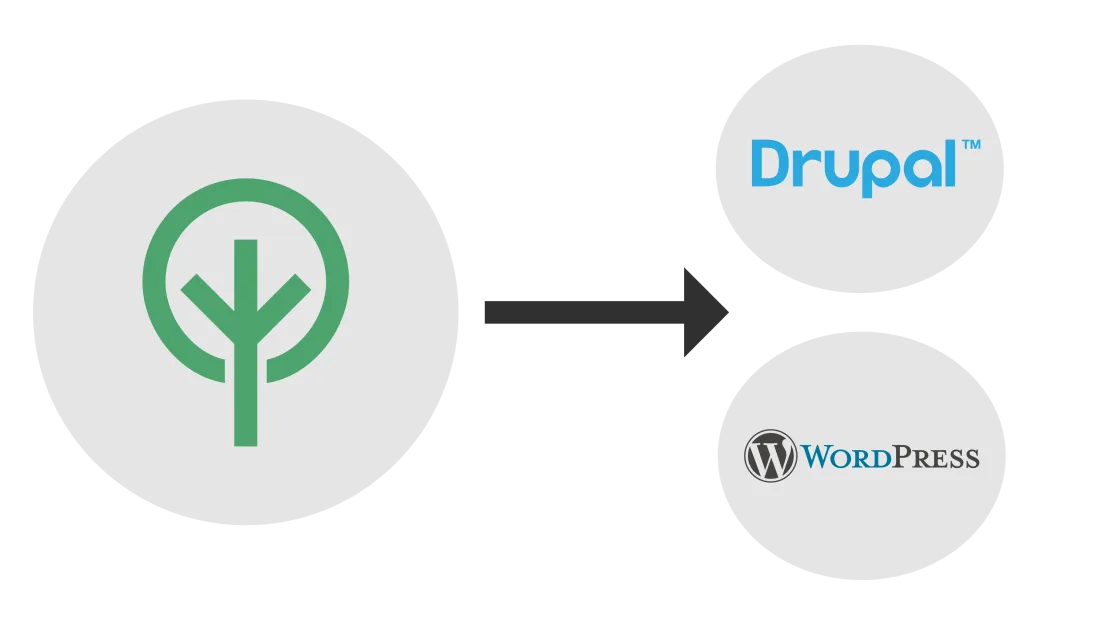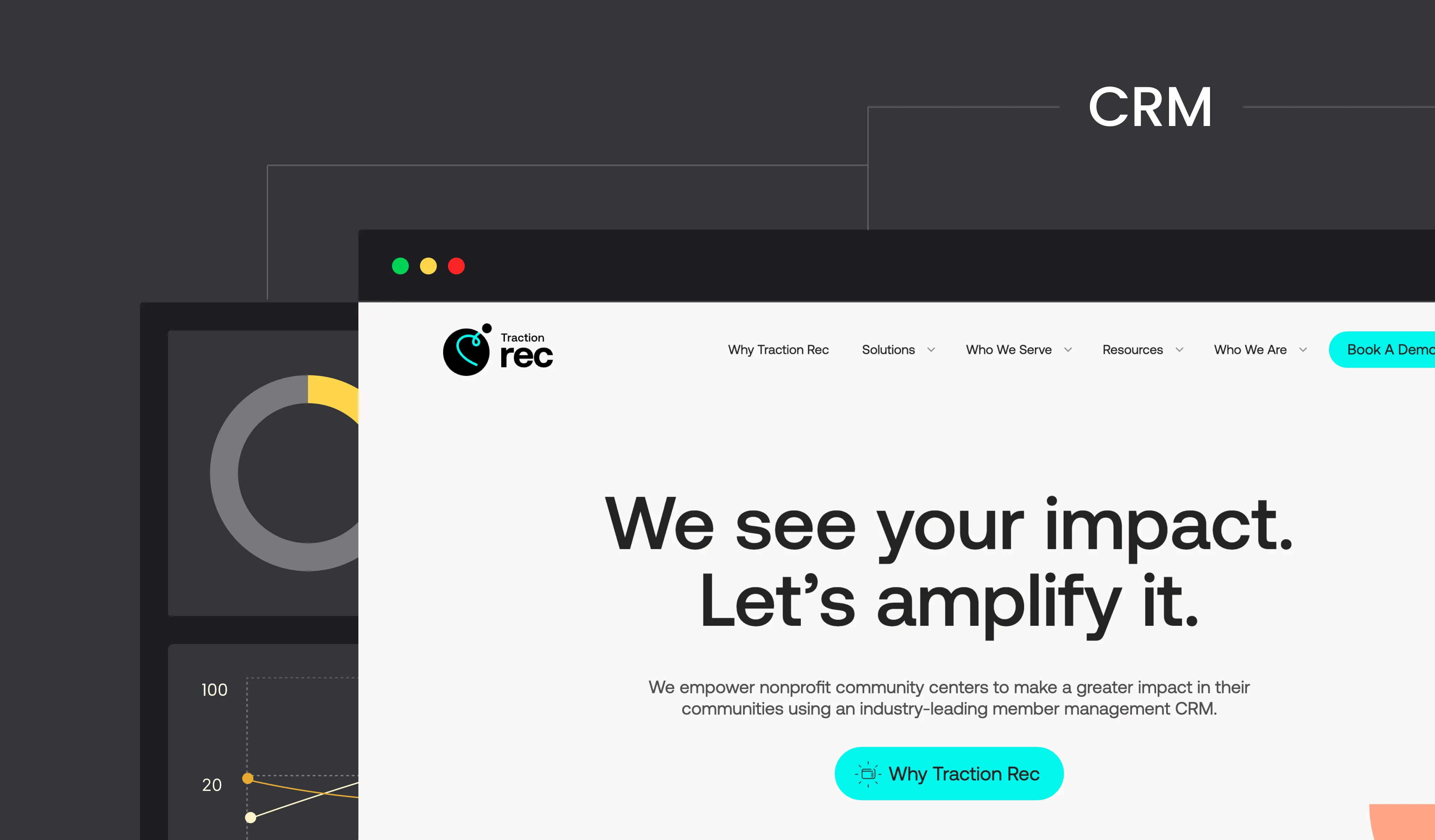In the Content Management System (CMS) market, BigTree is a niche player with a small but loyal installed base in the higher-education industry and the art & culture industry. A number of colleges and museums chose BigTree because it is open source and highly customizable, almost to a fault.
However, recent news revealed that BigTree is now in maintenance mode only ("release 4.4.16") and the next major software release ("release 5") is all but dead. If you are running a BigTree website, you need to act now and make plans to migrate to another CMS platform before BigTree reaches its inevitable end-of-life.
In this blog post, we first briefly recount BigTree's history and explain the most common reasons that led to its use by colleges and museums alike. Next, we suggest alternative CMS's for replacing BigTree based on how well the said reasons still hold true for the replacement. Lastly, we highlight some important issues as you migrate from BigTree to a new CMS platform.
BigTree past & present

The case for BigTree
In 2008, a group of employee developers of Fastspot came together to create BigTree. The code was subsequently open-sourced in 2011. Over the years, BigTree has been billed as a nimble and developer-friendly CMS. BigTree was valued by institutions in the higher-education and in the art & culture industries for the following reasons:
1. Open source community
Despite its original proprietary roots, BigTree has since thrived as an open-source niche project. The number of core project developers is minuscule in comparison with that of WordPress and Drupal. Yet, the project prides itself as being developer-friendly, forming a close-knit community where its lead developer often directly answers questions raised in the support forums.
Higher-education and art & culture are two industries that are well-versed in the benefits of supportive communities in their day-to-day work. The communal nature of open-source software naturally appeals to them. Both industries have had long histories of successfully deploying open-source software products. Not surprisingly, BigTree made inroads into those 2 industries.
2. High flexibility
BigTree is designed to have a core that is lightweight and provides only the most frequently used functionalities of a CMS, fully expecting that the out-of-the-box solution be extended to make it production-ready. BigTree's objective is for the CMS to be so flexible that developers have complete control over the design of a website. In fact, the entire front-end of a BigTree website needs to be built from the ground up. The customizability that BigTree offers is a major advantage to industries with complex CMS requirements, such as the higher-education and the art & culture industries.
The high degree of required customization has resource ramifications, namely, organizations that use BigTree must have in-house software development resources or the finances needed to outsource the task to external developers.
BigTree was built primarily using PHP, a very popular programming language powering major CMS platforms such as WordPress and Drupal. For those organizations that have the prerequisite development resources, it means that developers responsible for extending BigTree don't need to learn another new language to do their job, hence keeping the overall development cost down while giving them complete control over website design.
3. Headless CMS
At a very high level, a CMS stores and manages contents, and delivers them for display on output devices for use by users. The web browser used to be the only output medium for a CMS. With the proliferation of Internet of Things (IoT) devices, the contents managed by a CMS need to be made available and displayed on a whole slew of additional novel devices and innovative applications such as digital signages. To reduce a CMS's code complexity, the notion of a headless CMS was born.
A CMS is 'headless' when the storage and management of contents are decoupled from their presentation on output devices. A headless CMS functions only as a repository of contents which it makes accessible to output devices via an API. The logic of how the contents are displayed resides in the output devices themselves rather than in the CMS.
The API used to access headless BigTree is still in beta stage. Yet, there is considerable interest in this feature from industries because of the omni-channel capability that it provides.
Current maintenance mode reality

Despite the penetration BigTree made in the 2 aforementioned industries, rumors circulated about its viability which were later confirmed by a support message on March 16, 2022 by its lead developer. The message conveyed the sad reality that the long awaited version 5.0 was 'unlikely to ever find release' as the open-source project 'no longer had a company sponsoring it.' For the time being, only bug-fix releases would be made available.
As BigTree lingers in maintenance mode, software decay and obsolescence are two real threats facing its installed base. Without corporate sponsorship, its remaining developers have no choice but to relegate BigTree bug fixing and vulnerability patching to their spare time only, thereby putting the clients' website stability at risk. In addition, as its underlying technology stack advances, for example, PHP progressing from version 7 to version 8, failure to keep up means that BigTree websites cannot take advantage of the latest functionalities, performance optimization, and security updates. Even if a client is willing to forgo the benefits of keeping the technologies up-to-date, maintaining the status quo will inadvertently hurt their pocketbooks. What used to be done upstream for free must now be done in-house for it to be timely, driving up the overall I.T. cost.
If you are still operating a BigTree website, you need to act now to plan for migrating to a comparable or even better CMS. Next, we'll discuss some CMS candidates for replacing BigTree.
Candidates for replacing BigTree

Below, we rate candidates for replacing BigTree using the same 3 properties that make BigTree stand out in the first place. Our goal is to identify the best candidates that equal or better BigTree in those areas.
1. Open Source community
According to a 2021 study, WordPress and Drupal are the top 2 CMS's in use by US universities and colleges, with 41 and 19% of the market respectively. Both are open source, and both have vibrant and sizable communities supporting the projects. The communities are not targeting just software developers for churning out code, but also end users for sharing best practices, and marketers for promoting the CMS's.
The sheer size and level of support from their respective communities render, beyond any doubt, WordPress and Drupal viable for the long-term. Migrating to either CMS means that you won’t have to switch again because of the project’s development status.
2. High flexibility
BigTree revels in its flexibility; an apt mantra for BigTree is 'if you can dream it, you can code it.' Not surprisingly, of the 3 CMS's, BigTree requires the most custom work to make a website production-ready from out-of-the-box.
WordPress is generally known for its enormous repository of third-party off-the-shelf themes and modules. The high-level process for building a WordPress website is to install the core WordPress software, acquire and configure third-party themes and modules, and make only minimal customization to make the themes and modules conform to one's requirements. A caveat is that, if your requirements are complex, you may encounter challenges to make the new website perform exactly the way you want when you migrate to WordPress.
Drupal is at par with BigTree in the sense that it was designed with extendibility in mind. Like BigTree, a Drupal website requires customization to the out-of-the-box software. This should not pose any serious challenge to organizations migrating from BigTree because:
- they already have access to development resources if they were using BigTree, and
- BigTree developers can transition smoothly to Drupal because both software use the same technologies(PHP and MySQL).
3. Headless CMS
Both WordPress and Drupal are capable of acting as headless CMSs. Because of the 2 projects' vast development resources and their much larger installed bases, their implementation of the headless feature is more mature than the beta version from BigTree.
In summary, if you are switching from BigTree to WordPress, your new website may be somewhat constrained by the underlying building blocks–the off-the-shelf modules and themes. On the other hand, switching to Drupal will give you the same flexibility to develop your website exactly the way you envision in your requirements.
Migration issues

Regardless of which CMS ends up replacing BigTree, migrating from one CMS platform to another requires careful planning. To plan, you must perform a thorough investigation of which existing web contents and functionalities to migrate to the new CMS platform.
- Review the current digital business processes, and decide if they need to be optimized before migrating to the new platform.
- Take inventory of your existing web assets such as documents, images, video clips, etc, and decide which should be migrated, and which should be left out due to obsolescence or underuse.
For a more detailed overview of the overall content migration process, read our earlier post.
Summary & conclusion
Given that BigTree is now strictly in maintenance mode with no new features planned for future releases, current BigTree websites need to migrate to a similar or better CMS platform. WordPress and Drupal all have their unique advantages, and either is a worthy replacement for BigTree. In general, Drupal is a good candidate for replacing BigTree because, like BigTree, it is highly extendable, and as a bonus, it is constructed to be more secure and scalable. However, if you have modest website requirements and you are strapped for development resources, WordPress may be a suitable alternative.
Five Jars has extensive experience designing websites for the education industry and the art & culture industry, and if you are from either industry and you are looking for some help to migrate from BigTree to a new CMS platform, please contact us for more information.
Also Read
Web content migration: why & how


